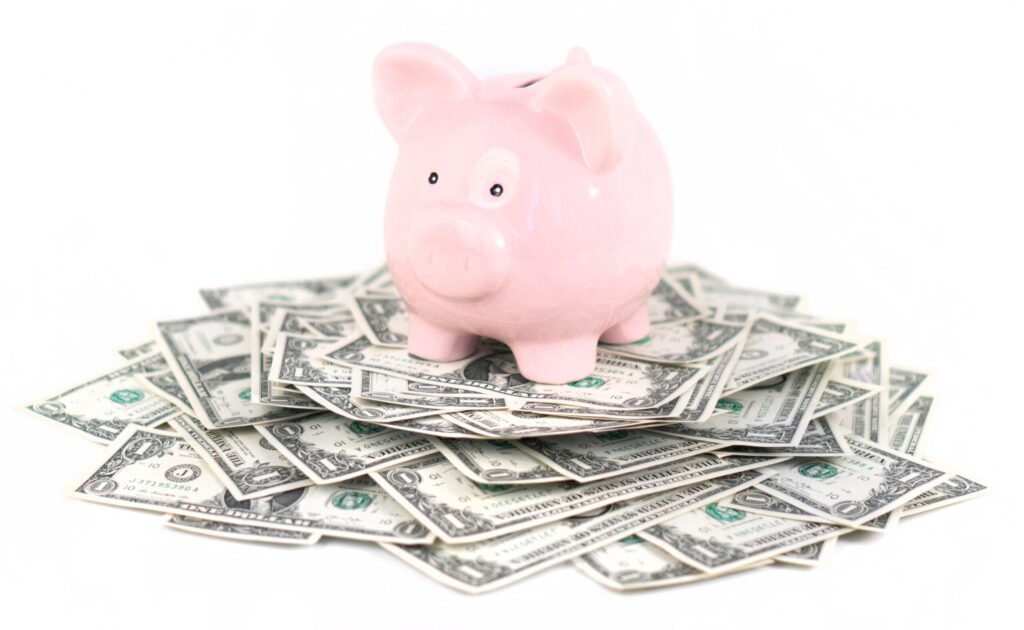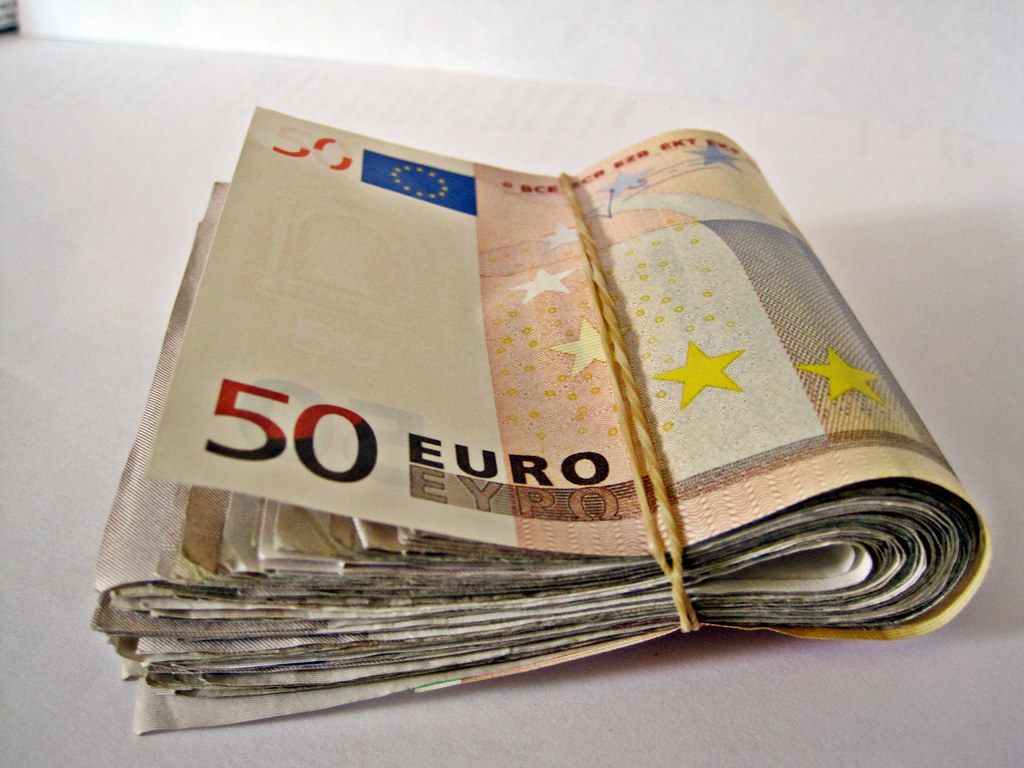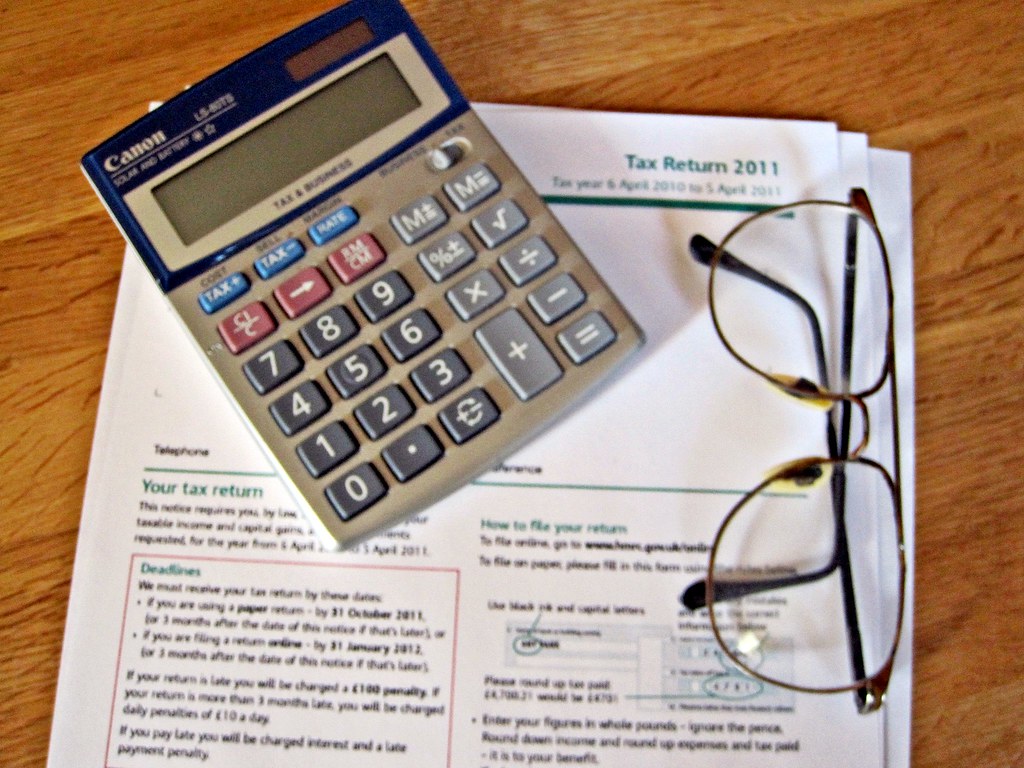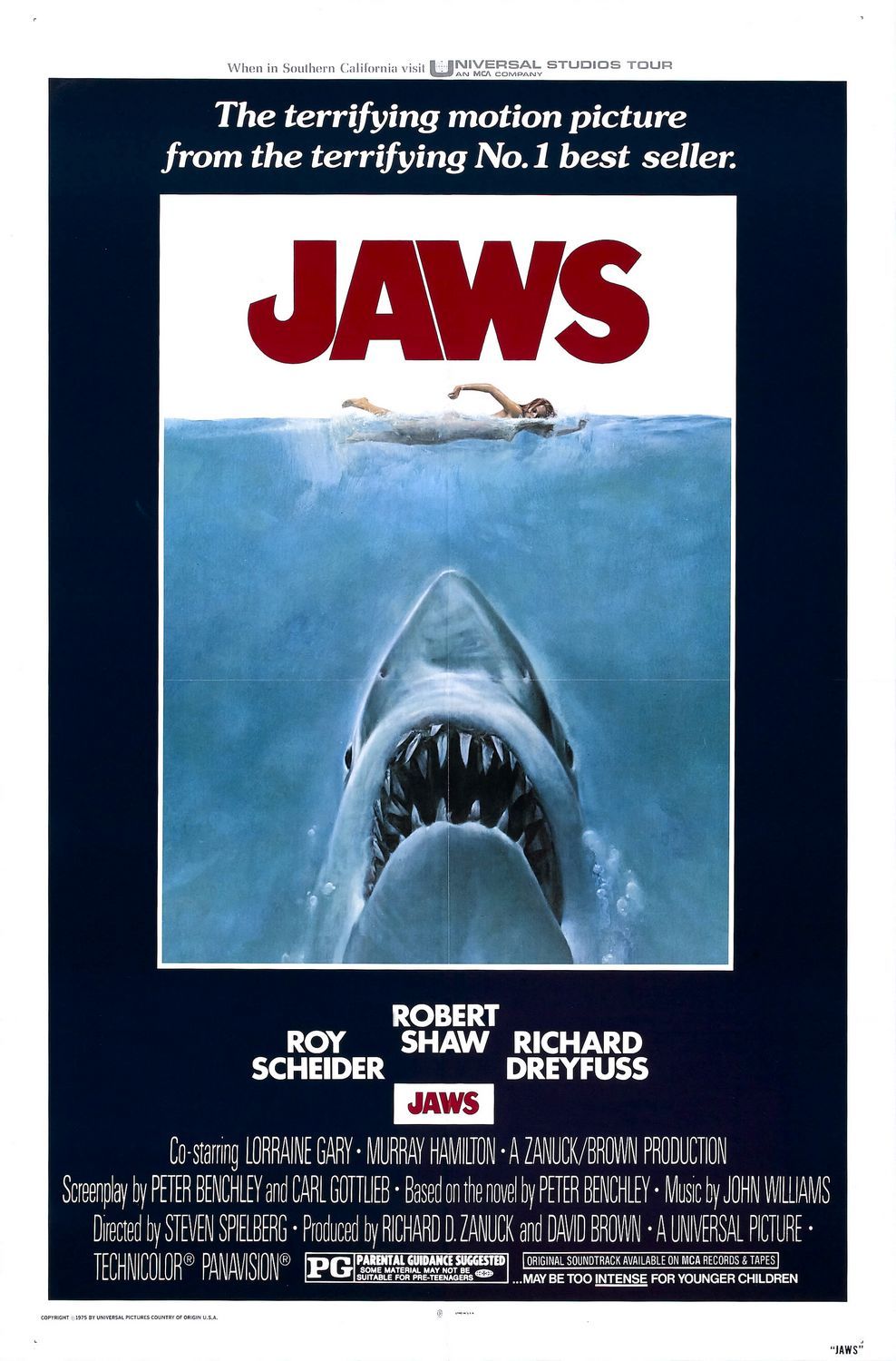
In the fast-paced world of social media, personal finance influencers, or ‘finfluencers,’ frequently flood our feeds with seemingly ‘expert’ tips designed to help users navigate everything from debt repayment to rapid wealth accumulation. While some of this advice can indeed be valuable, the sheer volume and often simplified nature of online content mean that truly detrimental counsel, or even fundamental misunderstandings, can easily slip through the cracks and lead us down financially perilous paths.
As seasoned observers of financial trends and consumer behavior, we’ve seen firsthand how crucial clarity and precision are in monetary matters. The stakes are simply too high for ambiguity or misinterpretation. Beyond outright bad advice, there’s a more insidious danger: the subtle but significant miscommunication that arises from a lack of precise language, especially when discussing degrees of financial risk, performance, or decline.
This in-depth analysis isn’t just about calling out ill-conceived tips; it’s about dissecting the very language we use to discuss finance, revealing how common linguistic errors, particularly around terms like ‘worse’ and ‘worst,’ can obscure crucial financial realities. By examining both explicit bad advice and the grammatical pitfalls that underpin a shallow understanding of risk, we aim to equip you with the critical tools needed to discern sound financial guidance from the truly damaging.
1. **Falling for the ‘Payday Loan Quick Fix’**One of the most insidious pieces of financial advice, often masquerading as a lifeline on social media, encourages individuals short on cash to get a payday loan. Influencers and advertisers promoting these loans frequently promise fast cash with no credit check, appealing directly to younger users who may not fully grasp the severe risks involved. This seemingly convenient solution, however, can quickly become a devastating financial trap for the unsuspecting.
Payday loans, sometimes referred to as a cash advance, are inherently short-term. They are typically for modest amounts, usually around $500 or less, and come with an expectation of repayment within just a few weeks. The allure is understandable for those caught in a paycheck-to-paycheck cycle, facing an emergency expense with no immediate alternative. It presents itself as a swift bridge over a temporary cash flow crunch.
However, the ‘downside’ of payday loans vastly outweighs any perceived convenience. Providers charge exorbitant fees and notoriously sky-high interest rates. According to the Center for Responsible Lending, the fees associated with payday loans can equate to an Annual Percentage Rate (APR) as high as 662% in some states. This astronomical cost transforms what appears to be a ‘quick fix’ into a vicious cycle of borrowing, forcing individuals to take out new loans simply to stay afloat and cover the spiraling costs of previous ones.
Instead of succumbing to this dangerous advice, individuals facing a cash shortage have better alternatives. A ‘better option’ involves proactively engaging with service providers to request payment extensions or more flexible repayment plans. For immediate, short-term relief, credit cards offering interest-free introductory periods can provide a temporary solution with significantly more flexibility and far lower costs than a payday loan. Ultimately, the most robust ‘longer-term solution’ is to prioritize building an emergency fund, providing a genuine safety net for unexpected expenses without resorting to predatory lending.
Read more about: Navigating Your Finances: A NerdWallet Guide to Understanding, Managing, and Conquering Debt

2. **Confusing Comparative ‘Worse’ with Superlative ‘Worst’**In the realm of financial discourse, precision in language is paramount, yet a common pitfall is the confusion between the comparative adjective ‘worse’ and the superlative adjective ‘worst.’ Both words are forms of ‘bad,’ but their roles in describing degrees of unfavorability are distinctly different. Misunderstanding this fundamental grammatical distinction can lead to significant misinterpretations of financial advice, risk assessments, and performance evaluations presented by social media influencers or other sources.
‘Worse’ serves as the comparative form of ‘bad,’ essentially translating to ‘more bad.’ It is specifically employed when making a comparison between only two things, situations, or conditions. For instance, if an influencer discusses two different investment strategies, they might state, ‘Strategy A yielded bad returns, but Strategy B performed even worse.’ This indicates that Strategy B’s performance was more unfavorable than Strategy A’s, providing a direct, one-to-one comparison of their relative ‘badness.’
Conversely, ‘worst’ is the superlative form of ‘bad,’ meaning ‘most bad.’ Its use is reserved for comparisons involving more than two things or when identifying the absolute lowest quality or most negative state among an entire group or category. An influencer might say, ‘Of all the market downturns this decade, the dot-com crash was the worst.’ Here, ‘worst’ signifies that the dot-com crash represented the most extreme, unfavorable outcome when compared to all other downturns.
The crucial difference between ‘worse’ and ‘worst’ lies in the ‘degree of badness’ each refers to and the number of items being compared. Financial advice that casually intermixes these terms can obscure the true severity of a situation. For instance, if an influencer states ‘the market is getting worse,’ it implies a decline from a previous state, a comparative change. But if they incorrectly state ‘this is the worst market ever’ without sufficient data for a true superlative comparison, it can induce undue panic or misrepresent the historical context of the current situation. Accurately distinguishing between these terms is therefore essential for any sound financial assessment.
Read more about: The Cardiologist’s Unfiltered Take: 9 ‘Worst’ Foods to Eradicate from Your Diet for Heart Health

3. **Misunderstanding ‘Worse’ as ‘More Bad’ in Financial Scenarios**To truly grasp financial commentary and advice, it’s critical to understand ‘worse’ in its precise function as the comparative form of ‘bad,’ signifying ‘more bad.’ This understanding allows for accurate assessment of deteriorating conditions or direct comparisons between two negative outcomes. When financial influencers fail to use this term correctly, or when audiences misinterpret its usage, the severity of a developing situation or the relative performance of financial instruments can be deeply misunderstood.
‘Worse’ is properly used when expressing that something has declined in quality, desirability, or condition relative to a previous state or another single entity. For example, a financial report might state, ‘The company’s earnings were bad last quarter, but this quarter’s results are worse,’ indicating a clear deterioration in financial performance. This usage highlights a negative change over time or in direct contrast to a single alternative, signaling a sense of ‘deterioration, decline, or inferiority in relation to another thing or situation.’
Consider an individual’s personal finances. If someone says, ‘My debt situation got worse after I lost my job,’ it accurately conveys that their financial standing, already problematic, has deteriorated further compared to its previous state. Similarly, an investment analyst might argue, ‘While both sectors are struggling, the tech sector’s outlook is worse than the retail sector’s,’ drawing a direct comparison of two struggling areas. This comparative usage of ‘worse’ is vital for expressing trends, comparing limited options, and indicating a negative shift.
The idiom ‘from bad to worse’ perfectly encapsulates this comparative meaning. It precisely conveys that ‘something started bad and has only deteriorated in quality or condition.’ In a financial context, this could describe an escalating debt problem, a declining business, or a poorly managed investment portfolio. For instance, ‘The company’s liquidity went from bad to worse as sales continued to plummet,’ painting a clear picture of a worsening financial spiral. Understanding ‘worse’ as ‘more bad’ is indispensable for correctly interpreting financial narratives and for making informed decisions when faced with evolving circumstances.
Read more about: Sorrow on the Grill: 6 BBQ Smokers Chefs Wish They Never Fired Up on the Deck

4. **Misinterpreting ‘Worst’ as ‘Most Bad’ for Extreme Outcomes**When evaluating financial risks, opportunities, or past events, the term ‘worst’ holds a singular power: it denotes the absolute extreme of ‘badness.’ As the superlative form of ‘bad,’ it means ‘most bad,’ and its correct application is crucial for accurately gauging ultimate potential outcomes or identifying the lowest points in financial history. Misinterpreting ‘worst’ can lead to either an underestimation of severe risks or an overstatement of current difficulties, skewing financial perceptions and decisions.
‘Worst’ is appropriately used to compare ‘more than two things or a group,’ signifying the ‘most negative or inferior condition’ among them. When a financial advisor discusses ‘the worst investment strategies,’ they are implying that these strategies rank at the very bottom compared to all other known approaches. This conveys that ‘worst represents the highest degree of badness’ across a broad spectrum of possibilities, demanding a comprehensive understanding of the entire comparative set.
Crucially, ‘worst’ can also be used to state that ‘something is the most extreme out of every possible option.’ This is particularly relevant in financial risk management, where professionals meticulously plan for ‘worst-case scenarios.’ For example, a market analyst might warn, ‘That was the worst market crash in recent memory,’ indicating it was the most severe compared to all other crashes within a defined period. This usage emphasizes the extreme nature of an event, rather than just a comparative decline.
Understanding ‘worst’ helps to contextualize events and plan for the improbable yet possible. When an influencer claims a particular stock is ‘the worst investment you can make,’ they are asserting its absolute inferiority compared to all other available investments. Conversely, when they use ‘worst’ loosely without a clear comparative context, they risk exaggerating a situation. For instance, ‘This is the worst financial climate’ should only be used if current conditions truly surpass all others on record. Grasping ‘worst’ as ‘most bad’ is fundamental to interpreting claims of financial extremism and assessing true, ultimate risk levels.
5. **Overlooking the Irregular Forms of ‘Bad’ in Financial Language**Many aspects of financial literacy depend on the clear and precise communication of information, and this extends even to the nuanced use of adjectives. A common grammatical detail often overlooked, yet critical in financial contexts, is the irregular formation of the comparative and superlative forms of the adjective ‘bad.’ Unlike most adjectives that simply add ‘-er’ or ‘-est,’ ‘bad’ transforms into ‘worse’ and ‘worst,’ respectively. This irregularity can be a subtle source of confusion if not properly understood, leading to miscommunication about financial performance, risk, or deterioration.
In standard English grammar, the comparative form of an adjective is usually created by adding ‘-er’ (e.g., fast becomes faster) or by preceding it with ‘more’ or ‘less’ (e.g., impressive becomes more impressive). Similarly, superlatives typically involve adding ‘-est’ (e.g., fast becomes fastest) or using ‘most’ or ‘least’ (e.g., impressive becomes most impressive). However, ‘bad,’ ‘worse,’ and ‘worst’ defy these conventional rules, much like ‘good,’ ‘better,’ and ‘best’ do for positive evaluations. This unique inflection demands focused attention, especially when conveying critical financial data.
The irregular nature of ‘bad,’ ‘worse,’ and ‘worst’ means that rote application of common grammatical rules won’t work. Instead, these forms must be recognized as distinct vocabulary items with specific uses. The context explicitly notes that ‘worse and worst don’t follow these rules, but you can see a remnant of the superlative ending -est at the end of worst and best, which can help you remember that they are superlatives.’ This small detail underscores the importance of memorizing and correctly applying these specific words rather than trying to fit them into a regular pattern.
In financial reporting, an analyst might say, ‘The company’s liabilities are worse this quarter,’ or, ‘This represents the worst quarter for the market in a decade.’ These statements rely on the audience’s immediate and accurate understanding of ‘worse’ as a comparative decline and ‘worst’ as an absolute low point. A failure to recognize these irregular forms can lead to misinterpretations of financial health, comparative performance, or the severity of a crisis. Therefore, grasping the irregular nature of ‘bad,’ ‘worse,’ and ‘worst’ is not merely a point of grammar, but a fundamental aspect of precise financial communication.
Read more about: Navigating the SUV Market: 14 Models U.S. Consumers Should Approach with Caution in 2024-2025

6. **Misapplying the ‘From Bad to Worse’ Expression**The expression ‘from bad to worse’ is a common idiom that perfectly encapsulates a specific type of negative financial trajectory, yet its misapplication can dilute the severity of a situation or confuse the audience. This phrase means that ‘something started bad and has only deteriorated in quality or condition.’ It’s a powerful descriptor for a downward spiral, and when used correctly in financial discussions, it paints a vivid picture of a worsening situation. However, if used indiscriminately or without a clear understanding of its implications, it can lead to miscommunication or an overestimation of the continuous decline.
When a social media influencer or financial commentator uses ‘from bad to worse,’ they are signaling a continuous, accelerating negative trend. This is not merely a static ‘bad’ situation, nor is it a single, isolated ‘worst’ event. Instead, it describes a process where an already unfavorable state is further aggravated, indicating a progressive decline. The context offers a clear example: ‘My handwriting has gone from bad to worse since I graduated high school,’ vividly illustrating a continuous negative progression from an initial bad state.
In financial terms, this idiom is highly relevant for describing scenarios such as a company’s financial health, an individual’s debt accumulation, or the performance of a specific market sector. For instance, if a company’s quarterly losses increase steadily over several periods, one might accurately say, ‘The company’s profitability has gone from bad to worse.’ This implies that each subsequent period has seen a further deterioration, highlighting a persistent and deepening problem rather than just a single dip.
Understanding the precise meaning and application of ‘from bad to worse’ is crucial for both those giving and receiving financial advice. It helps to differentiate between a stable, albeit negative, situation and one that is actively deteriorating. Overusing or misapplying this idiom can create unnecessary alarm or fail to capture the true dynamic of a financial trend. Proper usage ensures that the message of a continuous, worsening decline is clearly and accurately conveyed, enabling more informed decision-making based on the true trajectory of events.
Read more about: The Worst of the Worst: From Failed Future Forecasts to Tricky Grammar Traps
7. **Misusing ‘Worst Case’ vs. ‘Worse Case’ in Financial Risk Assessment**In the high-stakes arena of financial planning and risk management, clear and precise language isn’t just a nicety—it’s an absolute necessity. Yet, a subtle but significant linguistic pitfall that often trips up social media finfluencers, and subsequently their followers, is the casual interchangeability of ‘worse case’ and ‘worst case.’ This seemingly minor grammatical distinction can lead to a fundamental misunderstanding of risk severity and preparedness.
The phrase ‘worst case’ is not merely descriptive; it’s a set idiomatic expression, often appearing as ‘in the worst case’ or ‘worst-case scenario.’ These phrases specifically refer to a situation that is ‘as bad as possible compared to any other possible situation.’ For instance, a financial advisor might warn, ‘This isn’t what we expect to happen—it’s just the worst-case scenario,’ when discussing extreme market volatility or an investment’s ultimate downside.
Crucially, ‘worse case’ is not an established idiom with a specific meaning in this context. While the words ‘worse’ and ‘case’ can certainly appear together in a sentence—as in, ‘Jacob had a worse case of bronchitis than Melanie did’—it simply means a ‘more bad’ or ‘more severe’ instance of a case, not the absolute direst possible outcome among all options. This distinction is vital for accurately assessing financial risks and planning for contingencies.
When finfluencers discuss ‘worse case’ without recognizing the idiomatic weight of ‘worst case,’ they risk understating extreme threats or misguiding their audience on the scope of necessary preparations. Sound financial advice demands planning for the ‘worst-case scenario’—the absolute rock bottom—not just a ‘worse case’ that implies a comparative decline, but not necessarily the ultimate extreme. Precision here equips you to truly brace for impact.

8. **The Dual Idiom Dilemma: ‘If Worse Comes to Worst’ vs. ‘If Worst Comes to Worst’**Contingency planning is a cornerstone of responsible financial management. When anticipating potential problems, many turn to the expression signifying “if the worst possible outcome happens.” However, social media often presents this idiom with an unsettling lack of consistency, blurring the lines between ‘if worse comes to worst’ and ‘if worst comes to worst,’ leaving audiences unsure of the precise gravity being conveyed.
Both versions of the expression mean exactly the same thing: preparing for the most unfavorable possible turn of events. For example, if faced with a market crash, a financially savvy individual would consider, ‘If worst comes to worst and my portfolio tanks, what’s my backup plan?’ It’s about having a solution ready for the direst eventuality, rather than being caught off guard.
Interestingly, while ‘if worse comes to worst’ might seem more grammatically logical (a situation going from a bad state to an even ‘worse’ one, eventually reaching ‘worst’), ‘if worst comes to worst’ is actually much more commonly used. This widespread usage, despite its arguable grammatical quirkiness, underscores its accepted meaning as a direct acknowledgment of the absolute maximum possible badness.
For financial advice, the specific phrasing isn’t as critical as the underlying message: always have a plan for the absolute worst-case scenario. When finfluencers use these idioms, they should reinforce the principle of preparing for ultimate adversity. Whether it’s ‘if worse comes to worst’ or ‘if worst comes to worst,’ the takeaway for sound financial literacy remains the same: proactive solutions for even the most improbable, yet possible, financial catastrophes.
9. **Overlooking ‘Worst’ as a Noun: Preparing for the Ultimate Downside**When financial commentators, particularly on social media, discuss ‘worst,’ they often default to its use as an adjective, describing the ‘most bad’ situation. However, a crucial dimension of ‘worst’ frequently gets overlooked: its powerful role as a noun. This oversight can lead to incomplete or less impactful financial advice, as it misses the emphasis on preparing for ‘the thing’ that is most negative.
As a noun, ‘worst’ refers to ‘something that is worst’ or ‘that which is worst.’ The classic example, ‘Prepare for the worst,’ encapsulates this perfectly. It’s not just about acknowledging that a situation *could be* bad, but actively bracing oneself for ‘the worst’ possible outcome as a tangible entity that needs addressing. This usage shifts the focus from merely describing a condition to confronting a concrete possibility.
In financial planning, embracing ‘the worst’ as a noun encourages a proactive stance. For instance, when analysts speak of a company getting ‘the worst of a deal’ or investors pondering ‘at (the) worst’ what could happen, they are pinpointing the specific negative consequences or the absolute minimum return. This noun form demands a comprehensive assessment of the ultimate damage or lowest possible state.
Therefore, finfluencers offering financial guidance should emphasize ‘the worst’ as a concrete event or outcome for which specific strategies must be developed. Understanding ‘worst’ as a noun empowers individuals to not just analyze bad situations, but to actively plan for the ultimate downside, reinforcing the need for robust emergency funds, diversified portfolios, and comprehensive insurance policies. It transforms a descriptive term into an actionable directive.

10. **The Grammatical Blind Spot: ‘Worst’ as an Adverb in Financial Critique**Financial performance, especially in volatile markets, is often subjected to rigorous critique. While finfluencers are quick to use ‘worst’ as an adjective to label the poorest performing investments or most unfavorable conditions, they frequently miss its utility as an adverb. This grammatical blind spot means missing an opportunity for more nuanced and precise financial assessment, focusing only on ‘what’ is bad rather than ‘how badly’ something has been executed or performed.
As an adverb, ‘worst’ functions as the superlative of ‘badly,’ meaning ‘in the worst manner’ or ‘in the greatest degree.’ This allows for a direct comparison of how competently or effectively an action was carried out among all possible ways. For example, instead of simply saying a company’s financial quarter was ‘bad,’ an analyst employing the adverbial form might state that the quarter’s results were handled ‘worst’ compared to all competitors.
Consider evaluating different debt repayment strategies. While several might be ‘bad,’ one particular approach might perform ‘worst’ in terms of interest paid or time to freedom from debt, highlighting its extreme inefficiency. Similarly, a finfluencer might note that among various investment portfolios, one performed ‘worst’ during a downturn, indicating a fundamentally flawed allocation strategy rather than just generally poor returns.
Recognizing ‘worst’ as an adverb provides a powerful tool for dissecting financial behaviors and outcomes with greater precision. It enables a critique that goes beyond mere identification of ‘badness’ to an examination of the absolute lowest quality of execution or performance. This level of linguistic detail is invaluable for providing truly actionable insights and helping individuals avoid strategies that perform ‘worst’ compared to all others.

11. **Beyond ‘Most Bad’: Recognizing the Nuances of ‘Worst’ as an Adjective**While the definition of ‘worst’ as simply ‘most bad’ is foundational, social media financial advice often stops there, failing to delve into the rich array of specific meanings the term can convey as an adjective. This oversimplification deprives audiences of the detailed insights necessary to truly discern the nature of financial deficiencies, risks, or poor investments.
The context clarifies that ‘worst’ as an adjective encompasses much more than just a general sense of ‘most bad.’ It can mean ‘most faulty or unsatisfactory,’ ‘most unpleasant, unattractive, or disagreeable,’ ‘least efficient or skilled,’ ‘most unfavorable or injurious,’ or ‘in the poorest condition.’ These specific facets of ‘badness’ are critical for accurate financial evaluations.
For example, if an influencer labels a particular market trend as ‘the worst,’ are they implying it’s ‘most unfavorable or injurious’ to investors, or merely ‘most unpleasant’? Similarly, the ‘worst’ financial product might not just be ‘most bad’ overall, but specifically ‘most faulty or unsatisfactory’ in its design, or managed by the ‘least efficient or skilled’ team. Each nuance demands a different response or level of concern from the investor.
Actionable financial literacy requires looking beyond superficial descriptors. When encountering ‘worst’ in financial advice, readers should probe for the specific dimension of ‘badness’ being referenced. Understanding these nuances empowers individuals to make more informed judgments about the actual nature of a financial problem, rather than just reacting to a broad, generalized statement of inferiority.
Read more about: Worse vs. Worst: An In-Depth Business Insider Guide to Mastering These Tricky Adjectives
12. **The Pervasive Myth: Renting is Always a Financial Waste**Among the many pieces of financial advice flooding social media, few are as pervasive and potentially misleading as the blanket assertion that ‘Renting is a waste of time and money.’ While homeownership is indeed often a powerful vehicle for building long-term wealth, this absolute condemnation of renting is a dangerous oversimplification that ignores individual circumstances and market realities.
Owning a home comes with a significant array of financial commitments and challenges that extend far beyond the mortgage payment. There are substantial upfront costs, like a median down payment of $67,500 in the U.S. as of June 2024, according to Redfin, plus closing costs. Beyond that, homeowners face ongoing expenses for property taxes, insurance, maintenance, and potential repairs, all of which can be unpredictable and substantial.
For many, renting is not a ‘waste’ but a financially prudent choice, offering crucial flexibility. Renters are not tied to a property for years, making it ideal for those with uncertain job prospects, who desire mobility, or who simply aren’t ready to commit to a specific location. Their predictable monthly housing costs also simplify budgeting, as they are not burdened by unexpected maintenance or property tax hikes.
Furthermore, the capital saved by not making a large down payment and avoiding homeownership expenses can be invested elsewhere, potentially generating returns that outpace or at least complement the benefits of home equity. For individuals not yet financially stable enough for the rigors of homeownership, or in markets where renting is significantly cheaper than buying, it’s undeniably the ‘better option.’
Ultimately, the ‘worst’ financial advice is often that which fails to account for individual situations and market dynamics. Dismissing renting outright is a prime example. Savvy financial decision-making requires a thorough personal assessment—considering income stability, savings, career trajectory, lifestyle, and local market conditions—before deciding on the optimal housing strategy. There is no one-size-fits-all solution, and sometimes, renting is precisely the right move.
In an increasingly digital world, the sheer volume of financial advice available can be overwhelming, making it ever more challenging to distinguish between sound guidance and genuinely detrimental counsel. As we’ve seen, whether it’s the insidious allure of quick fixes like payday loans or the subtle but critical nuances in language around ‘worse’ and ‘worst,’ the devil truly is in the details. By sharpening our linguistic precision and critically evaluating broad generalizations, especially those like the universal condemnation of renting, we equip ourselves with the ultimate defense against bad financial advice. Empowering yourself with clear, factual understanding is not just about avoiding pitfalls; it’s about building a foundation for truly informed and robust financial health in an unpredictable landscape. Stay skeptical, stay informed, and always dig deeper than the headline.



